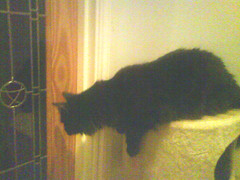It is, though, a bit chocolate-boxy, with the very perfect Wilber not merely giving his all for the slaves, but also inventing the GCSE, women’s suffrage and modern geology. He talks at one point of the healing waters from a spring having “waited for a million years”. Er, surely his own religious convictions would have stopped him from so brilliantly pre-empting Lyell (who was only born the same year as the film opens on).
The film packs in the historical figures who knew and influenced Wilbur: John Newton, Pitt the Younger, Thomas Clarkson, Lords Grenville and Fox and (the only black speaking part in the film) Olaudah Equiano. The script also works hard to explain the context: that many working class people lived brutal and impoverished lives; that there was no money for war veterans or other social causes; that whole cities had been built on slavery; that with America and France in revolution, a “popular” movement could be seen as seditious.
Much of this is described rather than seen, so apart from a few city street scenes the film always looks immaculate and tidy. Evidence of the horrors of slavery is also kept to descriptions of witnesses, rather than being enacted on screen. Wilberforce sees a few opiate visions, but mostly it’s what people say.
This is, of course, as was with the case the abolitionists made to Parliament. Yet I felt the film was somehow pulling its punches. The Roots TV series, which we’ve also been watching, is much more explicitly graphic, and I think more effective.
Yet it’s not as if there are loads of films made on the subject, and it’s not a bad film by any means. Though it certainly doesn’t suggest it was easy for Wilberforce to get the slave trade abolished in the British Empire (on 25 March 1807), it does rather simplify the story.
Slavery itself was not banned in the Empire until 1834 (after Wilberforce was dead). In the independent United States it continued until after their vicious civil war. No mention is made of that – indeed, the US is spoken of only with whispered excitement as a contagious hotbed of freedom and liberty.
The banning of the trade did eventually lead to the banning of slavery itself, and because existing slaves could not be replaced it can be argued that they were better treated in the intervening period. Yet indenture remained as slavery in all but name well into the twentieth century, and slavery continued in many countries until the end of the nineteenth. Slavery in various forms still exists today.
There’s a whole heap of events and stuff commemorating abolition this year, and I’ve had fun going through all the links there to glean yet more top facts:
“The surgeon on HMS Sybille , Robert McKinnal, took drastic action when a seaman went down with yellow fever, to convince his fellows that it was not contagious. One of the symptoms of yellow fever is black vomit, and McKinnal, on deck and in sight of the crew, drank off a glassful.”
Royal Navy, “Boredom, boat service and the black vomit”.
ETA: No sooner have I posted than I notice this feature on the emphasis of the commemoration on the BBC news site. Ng. Always behind the tide, me. Get there eventually.













